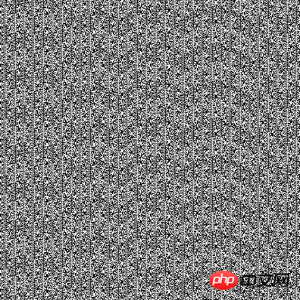 Backend Development
Backend Development
 PHP Tutorial
PHP Tutorial
 Detailed explanation of pseudo-random numbers and true random numbers in PHP
Detailed explanation of pseudo-random numbers and true random numbers in PHP
Detailed explanation of pseudo-random numbers and true random numbers in PHP
This article mainly introduces the detailed explanation of pseudo-random numbers and true random numbers in PHP. This article first explains the related concepts of true random numbers and pseudo-random numbers, and gives the comparison with mt_rand()functionAn example code to generate better pseudo-random numbers, friends who need it can refer to it
First of all, it needs to be stated that the computer will not generate absolutely random random numbers, the computer can only generate "pseudo-random numbers" . In fact, absolutely random numbers are just ideal random numbers. No matter how the computer develops, it will not generate a string of absolutely random numbers. Computers can only generate relatively random numbers, that is, pseudo-random numbers.
Pseudo-random numbers are not pseudo-random numbers. The "pseudo" here means regular, that is, the pseudo-random numbers generated by the computer are both random and regular. How to understand it? The generated pseudo-random numbers sometimes follow certain rules, and sometimes they do not follow any rules; some of the pseudo-random numbers follow certain rules; the other part does not follow any rules. For example, "There are no two leaves with the same shape in the world." This points to the characteristics of things, that is, randomness, but the leaves of every tree have similar shapes, which is the commonality of things, that is, regularity. From this perspective, you will probably accept the fact that computers can only generate pseudo-random numbers but cannot generate absolutely random numbers.
First, let’s understand the concepts of true random numbers and pseudo-random numbers.
True random number generators: English: true random number generators, abbreviated as: TRNGs, are random numbers generated by unpredictable physical methods.
Pseudo-random number generators: English: pseudo-random number generators, abbreviated as: PRNGs, are generated by computers using certain algorithms.
Compare the pictures of the random numbers generated by the two methods.
Random bitmap generated by Random.org (which uses atmospheric noise to generate random numbers, which is generated by thunderstorms in the air):

Random pictures generated by the rand() function of PHP under Windows:

Obviously, the pictures generated by the latter pseudo-random number generator have such obvious stripes.
The code that uses PHP's rand random function to generate this picture is:
The code is as follows:
//需要开启gd库
header("Content-type: image/png");
$im = imagecreatetruecolor(512, 512)
or die("Cannot Initialize new GD image stream");
$white = imagecolorallocate($im, 255, 255, 255);
for ($y=0; $y<512; $y++) {
for ($x=0; $x<512; $x++) {
if (rand(0,1) === 1) {
imagesetpixel($im, $x, $y, $white);
}
}
}
imagepng($im);
imagedestroy($im);In fact, not all pseudo-random numbers occur The effect of PRNGs is so poor, but the rand() function of PHP under Windows happens to be like this. If the same code is tested under Linux, the resulting picture will not show obvious stripes. Under Windows, if the mt_rand() function is used instead of the rand() function, the effect will be much better. This is because mt_rand() uses the Mersenne Twister algorithm to generate random numbers. The PHP documentation also says: mt_rand() can generate random values on average four times faster than the rand() provided by libc.
The following is an example code that uses PHP to generate better pseudo-random numbers than using the mt_rand() function:
The code is as follows:
<?php
// get 128 pseudorandom bits in a string of 16 bytes
$pr_bits = '';
// Unix/Linux platform?
$fp = @fopen('/dev/urandom','rb');
if ($fp !== FALSE) {
$pr_bits .= @fread($fp,16);
@fclose($fp);
}
// MS-Windows platform?
if (@class_exists('COM')) {
try {
$CAPI_Util = new COM('CAPICOM.Utilities.1');
$pr_bits .= $CAPI_Util->GetRandom(16,0);
// if we ask for binary data PHP munges it, so we
// request base64 return value. We squeeze out the
// redundancy and useless ==CRLF by hashing...
if ($pr_bits) { $pr_bits = md5($pr_bits,TRUE); }
} catch (Exception $ex) {
// echo 'Exception: ' . $ex->getMessage();
}
}
if (strlen($pr_bits) < 16) {
// do something to warn system owner that
// pseudorandom generator is missing
}
?>So PHP To generate truly random numbers, you still need to call external elements to support it!
The above is the detailed content of Detailed explanation of pseudo-random numbers and true random numbers in PHP. For more information, please follow other related articles on the PHP Chinese website!

Hot AI Tools

Undresser.AI Undress
AI-powered app for creating realistic nude photos

AI Clothes Remover
Online AI tool for removing clothes from photos.

Undress AI Tool
Undress images for free

Clothoff.io
AI clothes remover

AI Hentai Generator
Generate AI Hentai for free.

Hot Article

Hot Tools

Notepad++7.3.1
Easy-to-use and free code editor

SublimeText3 Chinese version
Chinese version, very easy to use

Zend Studio 13.0.1
Powerful PHP integrated development environment

Dreamweaver CS6
Visual web development tools

SublimeText3 Mac version
God-level code editing software (SublimeText3)

Hot Topics
 1377
1377
 52
52
 PHP 8.4 Installation and Upgrade guide for Ubuntu and Debian
Dec 24, 2024 pm 04:42 PM
PHP 8.4 Installation and Upgrade guide for Ubuntu and Debian
Dec 24, 2024 pm 04:42 PM
PHP 8.4 brings several new features, security improvements, and performance improvements with healthy amounts of feature deprecations and removals. This guide explains how to install PHP 8.4 or upgrade to PHP 8.4 on Ubuntu, Debian, or their derivati
 Discuss CakePHP
Sep 10, 2024 pm 05:28 PM
Discuss CakePHP
Sep 10, 2024 pm 05:28 PM
CakePHP is an open-source framework for PHP. It is intended to make developing, deploying and maintaining applications much easier. CakePHP is based on a MVC-like architecture that is both powerful and easy to grasp. Models, Views, and Controllers gu
 CakePHP File upload
Sep 10, 2024 pm 05:27 PM
CakePHP File upload
Sep 10, 2024 pm 05:27 PM
To work on file upload we are going to use the form helper. Here, is an example for file upload.
 How To Set Up Visual Studio Code (VS Code) for PHP Development
Dec 20, 2024 am 11:31 AM
How To Set Up Visual Studio Code (VS Code) for PHP Development
Dec 20, 2024 am 11:31 AM
Visual Studio Code, also known as VS Code, is a free source code editor — or integrated development environment (IDE) — available for all major operating systems. With a large collection of extensions for many programming languages, VS Code can be c
 How do you parse and process HTML/XML in PHP?
Feb 07, 2025 am 11:57 AM
How do you parse and process HTML/XML in PHP?
Feb 07, 2025 am 11:57 AM
This tutorial demonstrates how to efficiently process XML documents using PHP. XML (eXtensible Markup Language) is a versatile text-based markup language designed for both human readability and machine parsing. It's commonly used for data storage an
 CakePHP Quick Guide
Sep 10, 2024 pm 05:27 PM
CakePHP Quick Guide
Sep 10, 2024 pm 05:27 PM
CakePHP is an open source MVC framework. It makes developing, deploying and maintaining applications much easier. CakePHP has a number of libraries to reduce the overload of most common tasks.
 PHP Program to Count Vowels in a String
Feb 07, 2025 pm 12:12 PM
PHP Program to Count Vowels in a String
Feb 07, 2025 pm 12:12 PM
A string is a sequence of characters, including letters, numbers, and symbols. This tutorial will learn how to calculate the number of vowels in a given string in PHP using different methods. The vowels in English are a, e, i, o, u, and they can be uppercase or lowercase. What is a vowel? Vowels are alphabetic characters that represent a specific pronunciation. There are five vowels in English, including uppercase and lowercase: a, e, i, o, u Example 1 Input: String = "Tutorialspoint" Output: 6 explain The vowels in the string "Tutorialspoint" are u, o, i, a, o, i. There are 6 yuan in total
 Explain JSON Web Tokens (JWT) and their use case in PHP APIs.
Apr 05, 2025 am 12:04 AM
Explain JSON Web Tokens (JWT) and their use case in PHP APIs.
Apr 05, 2025 am 12:04 AM
JWT is an open standard based on JSON, used to securely transmit information between parties, mainly for identity authentication and information exchange. 1. JWT consists of three parts: Header, Payload and Signature. 2. The working principle of JWT includes three steps: generating JWT, verifying JWT and parsing Payload. 3. When using JWT for authentication in PHP, JWT can be generated and verified, and user role and permission information can be included in advanced usage. 4. Common errors include signature verification failure, token expiration, and payload oversized. Debugging skills include using debugging tools and logging. 5. Performance optimization and best practices include using appropriate signature algorithms, setting validity periods reasonably,



